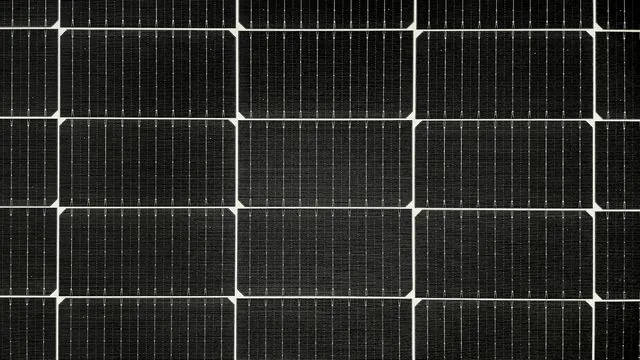
Breakthrough in Organic Solar Cells Promises Major Efficiency Boost!
2024-11-04
Author: Wei Ling
Introduction
In a groundbreaking study from North Carolina State University, scientists have unveiled crucial insights into the inner workings of organic solar cells, revealing ways to enhance their efficiency dramatically. Researchers developed an innovative method that visualizes the most critical interfaces where sunlight is transformed into electrical energy, paving the way for improved design rules that could revolutionize organic solar technology.
Overview of Organic Solar Cells
Organic solar cells, constructed from carbon-based polymers, are seen as the potential game-changers in the renewable energy landscape. They offer numerous advantages, including lower production costs and the ability to be made from abundant materials. Their unique properties allow for semi-transparent applications, making them suitable for windows and other surfaces, alongside lightweight and flexible forms that could benefit from roll-to-roll manufacturing techniques. This flexibility means easier transport and installation, a significant advantage as the world moves toward more sustainable energy solutions.
Efficiency Challenges
Despite their promising features, organic solar cells have historically lagged behind traditional silicon and perovskite solar technologies in efficiency. The study's co-author, Aram Amassian, a professor of materials science and engineering, explains that the efficiency limitations arise from the complexity of the materials used.
"Organic solar cells consist of a donor material, which is typically a polymer that captures sunlight and harvests electrons, and an acceptor material, often a small molecule, that receives those electrons. The interface between these two materials has long been suspected to be a significant source of voltage loss, hindering overall efficiency."
Advanced Research Methodology
To tackle this issue, the research team utilized advanced scanning-probe microscopy techniques to explore the physical properties of the donor and acceptor blend in detail. They were able to map the energy characteristics at the critical interfaces, assessing how the arrangement and disorder of these materials influence energy transfer efficiency.
"This method allowed us to visualize the complexities at play, demonstrating how the arrangement of molecules at the interface affects energy flow," states co-author Daniel Dougherty, a physics professor.
Key Findings
The complexity arises because blends of donor and acceptor materials create multiple interfaces, complicating the identification of which specific interfaces contribute most significantly to voltage losses. However, the researchers discovered that in high-performance organic solar cells, like the PM6:Y6 blends, the sharp donor-acceptor interface plays a crucial role in determining voltage losses. This realization suggests that targeting these interfaces can lead to significant reductions in energy loss.
The team also addressed a long-standing debate within the organic solar cell community regarding the factors influencing voltage loss. Their findings reveal that both energy differentials and energetic disorder significantly impact efficiency. "It's a dual factor issue," Amassian points out. "Our work confirms that addressing both elements simultaneously is vital for optimizing organic solar cell performance."
Potential Applications
Intriguingly, the researchers demonstrated that adjusting the blending process of the donor and acceptor materials could effectively "repair" energy differentials and minimize interfacial disorder. By selecting combinations of materials with smaller energy offsets and optimizing processing parameters, they found promising pathways to decrease voltage losses.
Conclusion
The implications of this research could extend far beyond academia, influencing the future design and commercial viability of organic solar cells. As the push for cleaner energy escalates, the findings from NC State inspire optimism that the next generation of solar technology will be not only innovative but also incredibly efficient.
In a world increasingly focused on renewable energy solutions, this discovery positions organic solar cells as a significant player in the transition towards sustainable energy—an exciting prospect for both researchers and investors alike.


 Brasil (PT)
Brasil (PT)
 Canada (EN)
Canada (EN)
 Chile (ES)
Chile (ES)
 España (ES)
España (ES)
 France (FR)
France (FR)
 Hong Kong (EN)
Hong Kong (EN)
 Italia (IT)
Italia (IT)
 日本 (JA)
日本 (JA)
 Magyarország (HU)
Magyarország (HU)
 Norge (NO)
Norge (NO)
 Polska (PL)
Polska (PL)
 Schweiz (DE)
Schweiz (DE)
 Singapore (EN)
Singapore (EN)
 Sverige (SV)
Sverige (SV)
 Suomi (FI)
Suomi (FI)
 Türkiye (TR)
Türkiye (TR)